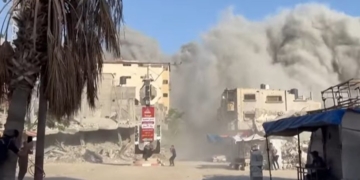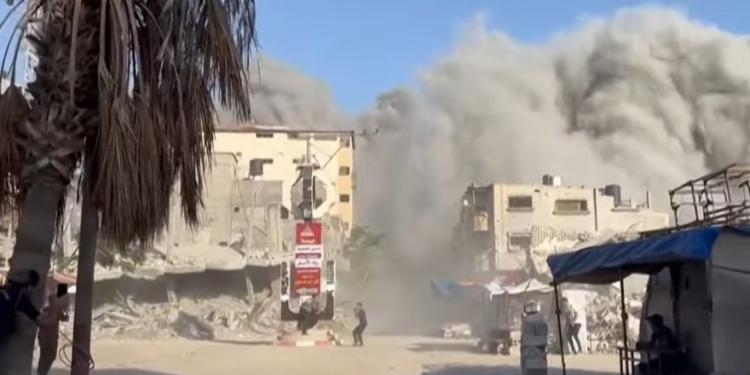After spending nearly $2 billion on air defense systems in the Middle East alone, the U.S. is reportedly running low on its stockpiles for the weaponry, U.S. officials told The Wall Street Journal.
Ukraine and Israel — along with a host of other U.S. allies — have been in urgent need of American weapons systems amid the ongoing Russia-Ukraine war and Israel’s war with Hamas and other terrorist groups in the Middle East. But the U.S. is reportedly struggling to keep up with demand and is starting to run out of air defense missile variants, a problem that could become even worse should those conflicts escalate or drag on, officials told the WSJ.
It also raises the risk that the U.S. won’t be ready for a potential conflict in the Indo-Pacific region, especially given that China is rapidly expanding its military and acting increasingly hostile toward allies like Taiwan and the Philippines, according to the WSJ.
The officials spoke to the WSJ on condition of anonymity given the sensitive nature of the information. The Pentagon doesn’t talk about its weapons stockpiles because it’s classified information — and to keep adversaries guessing.
“The U.S. has not developed a defense industrial base intended for a large-scale war of attrition in both Europe and the Middle East, while meeting its own readiness standards,” Elias Yousif, senior defense expert at the Conventional Defense Program at the Stimson Center, told the WSJ. “And both of those wars are extended conflicts, which was not part of the U.S. defense planning.”
The missiles in question are prized because they serve as interceptors; Ukraine uses them to shoot down Russian aerial attacks, as does Israel against attacks from Hamas, Hezbollah, the Houthis, Syria and Iraq-based actors and Iran, the latter of which backs those terrorist groups and has launched unprecedented strikes against Israel since last October, when Hamas invaded Israel and sparked a regional war.
The U.S. has also used more than 100 interceptor missiles to shoot down Houthi missiles in the Red Sea region since last October, and the terrorist group has shown little signs of abating, according to the WSJ. U.S. forces have spent more than $1.8 billion on defending itself and Israel from the Houthis and Iranian-backed attacks from last year.
The Pentagon’s difficulty in keeping up with interceptor provisions to allies raises questions about the department’s stockpiles, U.S. officials told the WSJ. There’s concern in the Pentagon that the weapon systems will run out faster than they can be replaced, officials and analysts said.
It’s not an easy task to build the needed missiles, because it typically requires the Pentagon to open new lines of production with defense contractors — which usually means hiring more workers, according to the WSJ. Those contractors often don’t want to hire more staff without knowing the Pentagon’s long-term buying plans.
Some of the missiles are also intricate in design, making them even harder to produce.
“The more sophisticated the missile, the harder it is to produce them,” Navy Secretary Carlos Del Toro told lawmakers during a congressional hearing in May, according to the WSJ.
The Pentagon did not immediately respond to a request for comment.
(Featured Image Media Credit: Screen Capture/Voice of America)
All content created by the Daily Caller News Foundation, an independent and nonpartisan newswire service, is available without charge to any legitimate news publisher that can provide a large audience. All republished articles must include our logo, our reporter’s byline and their DCNF affiliation. For any questions about our guidelines or partnering with us, please contact [email protected].



























 Continue with Google
Continue with Google